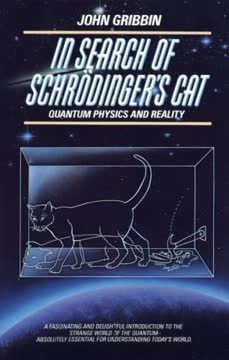Key Takeaways
1. The quantum revolution: A paradigm shift in our understanding of reality
"Nothing is real unless we look at it, and it ceases to be real as soon as we stop looking."
A new reality. The quantum revolution of the early 20th century fundamentally changed our understanding of the physical world. Unlike classical physics, which describes a deterministic universe where everything can be precisely measured and predicted, quantum mechanics reveals a bizarre realm where particles behave in ways that defy common sense.
Key figures and discoveries:
- Max Planck's discovery of energy quanta (1900)
- Albert Einstein's explanation of the photoelectric effect (1905)
- Niels Bohr's model of the atom (1913)
- Werner Heisenberg's uncertainty principle (1927)
- Erwin Schrödinger's wave equation (1926)
These discoveries led to a new understanding of reality that challenges our intuitions about the nature of matter, energy, and the very fabric of space and time.
2. Wave-particle duality: Light and matter's dual nature
"It is difficult to make clear how decisively the 'relative state' formulation drops classical concepts."
Dual nature revealed. One of the most puzzling aspects of quantum mechanics is wave-particle duality. This concept states that all matter and energy exhibit both wave-like and particle-like properties, depending on how they are observed.
Key experiments demonstrating wave-particle duality:
- Thomas Young's double-slit experiment (1801)
- Einstein's explanation of the photoelectric effect (1905)
- Louis de Broglie's matter waves hypothesis (1924)
- Davisson-Germer experiment confirming electron waves (1927)
This duality challenges our classical understanding of reality and forces us to accept that the fundamental nature of matter and energy is more complex than we previously thought.
3. Uncertainty principle: The limits of measurement in the quantum world
"We cannot know, as a matter of principle, the present in all its details."
Fundamental limits. Heisenberg's uncertainty principle states that it is impossible to simultaneously measure certain pairs of physical properties of a particle with infinite precision. The more accurately we measure one property, the less accurately we can measure the other.
Implications of the uncertainty principle:
- Limits on our ability to predict the future state of particles
- Challenges to the concept of determinism in physics
- Introduces fundamental randomness into the fabric of reality
- Affects our understanding of causality at the quantum level
This principle is not just a limitation of our measuring instruments but a fundamental property of nature itself, forcing us to reconsider our notions of certainty and predictability in the universe.
4. Quantum superposition: Particles existing in multiple states simultaneously
"It is as if we had a single electron shuttling back and forth, back and forth, back and forth on the loom of time to weave a rich tapestry containing perhaps all the electrons and positrons in the world."
Multiple realities. Quantum superposition is the principle that particles can exist in multiple states simultaneously until they are observed or measured. This leads to phenomena like Schrödinger's famous thought experiment, where a cat in a box can be considered both alive and dead until the box is opened.
Examples and implications of superposition:
- Electrons existing in multiple energy states in atoms
- Quantum computers utilizing superposition for parallel processing
- The double-slit experiment showing particles interfering with themselves
- Challenges to our understanding of reality and consciousness
Superposition highlights the probabilistic nature of quantum mechanics and raises profound questions about the nature of reality when unobserved.
5. Quantum entanglement: Spooky action at a distance
"Everything is connected to everything else, and only a holistic approach to the universe is likely to explain phenomena such as human consciousness."
Instantaneous connections. Quantum entanglement is a phenomenon where particles become correlated in such a way that the quantum state of each particle cannot be described independently, even when separated by large distances. Einstein famously referred to this as "spooky action at a distance."
Key aspects of entanglement:
- Particles can be entangled regardless of distance
- Measuring one particle instantly affects its entangled partner
- Challenges our understanding of locality and causality
- Potential applications in quantum computing and cryptography
Entanglement has been experimentally verified and remains one of the most mysterious and counterintuitive aspects of quantum mechanics, with profound implications for our understanding of space, time, and information.
6. The Copenhagen interpretation: Observation collapses the wave function
"To conclude that it goes either through one hole or the other when you are not looking is to produce an error."
Reality through observation. The Copenhagen interpretation, developed primarily by Niels Bohr and Werner Heisenberg, posits that a quantum system exists in all possible states simultaneously until it is observed. The act of observation causes the wave function to collapse, forcing the system into a definite state.
Key points of the Copenhagen interpretation:
- Quantum systems exist in superposition until measured
- The act of measurement affects the system being measured
- Emphasizes the role of the observer in determining reality
- Introduces probability and indeterminism into physics
This interpretation has been the dominant view in quantum mechanics for decades, despite its philosophical challenges and counterintuitive implications.
7. Many-worlds interpretation: Every quantum possibility exists in parallel universes
"All worlds are equally real, but only suitable worlds contain observers."
Infinite realities. The many-worlds interpretation, proposed by Hugh Everett in 1957, suggests that every possible outcome of a quantum event actually occurs, but in separate, parallel universes. This interpretation removes the need for wave function collapse and preserves determinism at the cost of an ever-branching multiverse.
Implications of the many-worlds interpretation:
- Eliminates the need for wave function collapse
- Preserves determinism by allowing all possibilities to occur
- Raises questions about the nature of probability and consciousness
- Challenges our understanding of reality and personal identity
While controversial, this interpretation provides a logically consistent way to resolve many quantum paradoxes and has gained increasing acceptance among physicists in recent years.
8. Quantum mechanics in everyday life: From electronics to genetic engineering
"Without quantum theory there would be no genetic engineering, no solid-state computers, no nuclear power stations (or bombs)."
Practical applications. Despite its abstract and counterintuitive nature, quantum mechanics has led to numerous technological advancements that impact our daily lives.
Examples of quantum mechanics in technology:
- Transistors and semiconductors in electronic devices
- Lasers in communications, medicine, and entertainment
- MRI machines in medical imaging
- LED lights and solar panels
- Quantum cryptography for secure communications
Understanding quantum mechanics has also been crucial in fields like chemistry and biology, enabling advancements in drug design, materials science, and genetic engineering.
9. The EPR paradox and Bell's theorem: Testing quantum reality
"Experiments have recently been carried out that would have forced Einstein to change his conception of nature on a point he always considered essential."
Quantum reality confirmed. The EPR (Einstein-Podolsky-Rosen) paradox was a thought experiment designed to show that quantum mechanics was incomplete. However, John Bell later developed a theorem that allowed for experimental tests of quantum mechanics against local hidden variable theories.
Key points about the EPR paradox and Bell's theorem:
- EPR paradox challenged the completeness of quantum mechanics
- Bell's theorem provided a way to experimentally test quantum reality
- Experiments by Alain Aspect and others have consistently supported quantum mechanics
- Results suggest that reality is non-local and that entanglement is a fundamental feature of nature
These experiments have provided strong support for the quantum mechanical view of reality, forcing us to accept its strange implications.
10. Unresolved questions: The search for a unified theory of everything
"Sensible mathematics involves neglecting a quantity when it turns out to be small—not neglecting it just because it is infinitely great and you do not want it!"
Ongoing challenges. Despite its successes, quantum mechanics still faces unresolved issues and challenges in reconciling with other areas of physics, particularly general relativity.
Current challenges and areas of research:
- Quantum gravity: Reconciling quantum mechanics with general relativity
- The measurement problem: Understanding the nature of wave function collapse
- The role of consciousness in quantum mechanics
- Interpretations of quantum mechanics: Copenhagen, many-worlds, and others
- Quantum field theory and the search for a "Theory of Everything"
These ongoing questions continue to drive research in theoretical physics and may lead to new breakthroughs in our understanding of the universe at its most fundamental level.
Last updated:
FAQ
What's In Search of Schrödinger's Cat about?
- Exploration of Quantum Physics: The book delves into the fundamental principles of quantum mechanics, contrasting them with classical physics. It covers the historical development of quantum theory and its implications for our understanding of reality.
- Schrödinger's Cat Paradox: The title refers to a thought experiment illustrating the strange nature of quantum states and superposition. It challenges our perception of reality by showing how particles exist in multiple states until observed.
- Science and Philosophy Interplay: John Gribbin examines the philosophical implications of quantum mechanics, questioning the nature of reality. The book aims to make complex ideas accessible to a general audience.
Why should I read In Search of Schrödinger's Cat?
- Accessible Explanation: Gribbin presents complex scientific concepts in an engaging and understandable way for non-scientists, making it a great introduction to quantum physics.
- Historical Context: The book provides a rich narrative of the contributions of key figures like Einstein, Bohr, and Schrödinger, adding depth to the reader's comprehension of modern physics.
- Thought-Provoking Ideas: It encourages critical thinking about the nature of reality and the universe, inviting readers to question their assumptions about the physical world.
What are the key takeaways of In Search of Schrödinger's Cat?
- Quantum Mechanics Fundamentals: The book outlines basic principles like wave-particle duality and uncertainty, crucial for understanding quantum physics.
- Reality is Probabilistic: Gribbin emphasizes that quantum events are governed by probabilities, challenging traditional notions of determinism in classical physics.
- Interconnectedness of Particles: It discusses how particles can be entangled, meaning the state of one can affect another instantaneously, regardless of distance.
What is Schrödinger's Cat, and why is it significant in quantum mechanics?
- Thought Experiment: Schrödinger's Cat is a scenario where a cat in a sealed box is simultaneously alive and dead until observed, illustrating superposition.
- Challenge to Classical Intuition: The paradox highlights the counterintuitive nature of quantum mechanics, where particles can exist in multiple states.
- Philosophical Implications: It invites discussions about reality and observation, suggesting that reality may not be as straightforward as it appears.
How does quantum mechanics differ from classical physics?
- Deterministic vs. Probabilistic: Classical physics operates on deterministic principles, while quantum mechanics introduces probabilities, meaning outcomes can only be predicted statistically.
- Wave-Particle Duality: Classical physics treats particles and waves as distinct, but quantum mechanics shows particles can exhibit both properties.
- Role of the Observer: In classical physics, the observer does not affect the system, but in quantum mechanics, measurement influences the state of a particle.
What is the Copenhagen interpretation of quantum mechanics?
- Complementarity Principle: Associated with Bohr, it posits that wave and particle descriptions of quantum entities are complementary, providing different insights.
- Probabilistic Nature: It emphasizes that quantum mechanics provides probabilities of outcomes, aligning with inherent uncertainty in measurements.
- Observer's Role: The interpretation suggests reality is not determined until observed, challenging traditional views of an objective reality.
What is the significance of Planck's constant in quantum mechanics?
- Fundamental Constant: Planck's constant relates the energy of a photon to its frequency, bridging wave and particle descriptions of light.
- Quantization of Energy: It signifies that energy is quantized, existing in discrete amounts rather than a continuous spectrum.
- Role in Equations: Appearing in fundamental equations, it underscores the departure from classical physics and the introduction of quantum principles.
What are the implications of quantum entanglement?
- Instantaneous Connection: Entanglement describes particles interconnected such that the state of one affects another instantly, challenging classical locality.
- Non-Locality: It suggests information can be shared instantaneously, raising questions about space and time's fundamental structure.
- Applications in Technology: Entanglement is key in technologies like quantum computing and cryptography, leveraging unique properties for advanced processing and security.
What is the uncertainty principle and its implications?
- Heisenberg's Principle: It states that certain pairs of properties, like position and momentum, cannot be precisely measured simultaneously.
- Challenges Classical Physics: It undermines deterministic views, introducing unpredictability in quantum systems.
- Philosophical Impact: It raises questions about reality and our ability to understand it, implying fundamental limits to knowledge.
How do quantum mechanics and genetics relate?
- Quantum Theory in Biology: Quantum mechanics underpins molecular biology, including DNA structure, essential for explaining molecular behavior.
- Genetic Engineering: Advances rely on quantum mechanics to manipulate DNA, rooted in understanding atomic and molecular quantum behavior.
- Interconnectedness of Sciences: Gribbin highlights how quantum mechanics influences various fields, emphasizing a multidisciplinary approach.
How does In Search of Schrödinger's Cat address the philosophical implications of quantum mechanics?
- Reality and Observation: The book explores how quantum mechanics challenges our understanding of reality, particularly the observer's role.
- Determinism vs. Indeterminism: It discusses the shift from a deterministic universe to one governed by probabilities, impacting concepts like free will.
- Interconnectedness of the Universe: Emphasizing particle interconnectedness, it suggests a holistic view of reality, inviting reconsideration of separation and individuality.
How does the Copenhagen interpretation differ from the many-worlds interpretation?
- Copenhagen Interpretation: Posits quantum systems exist in probability states until measured, emphasizing the observer's role in reality.
- Many-Worlds Interpretation: Suggests all quantum event outcomes occur in parallel universes, with each measurement resulting in reality branching.
- Philosophical Consequences: Copenhagen implies randomness, while many-worlds offers determinism, leading to different implications for understanding reality.
Review Summary
In Search of Schrodinger's Cat is praised for its accessible explanation of quantum physics concepts and history. Readers appreciate Gribbin's engaging writing style and thorough coverage of key scientists and experiments. Many found it enlightening, though some felt certain sections were complex or dated. The book is recommended for those interested in quantum mechanics, offering insights into its paradoxes and implications. Some reviewers noted it required concentration to follow, but overall found it a valuable introduction to the subject.
Schrödinger's Cat Series
Similar Books
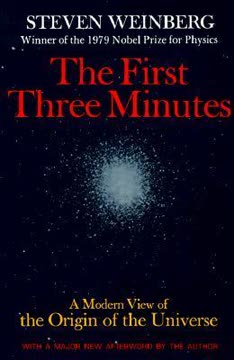
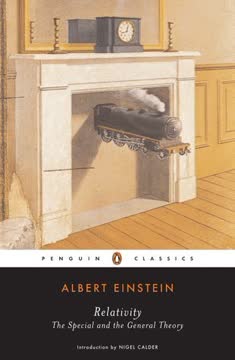
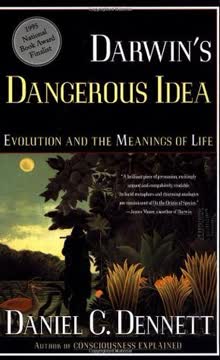

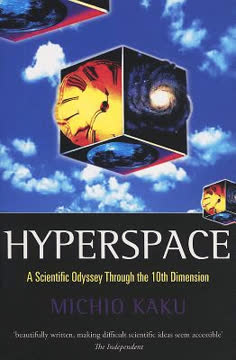
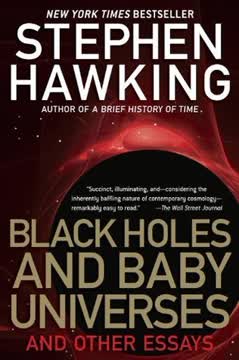

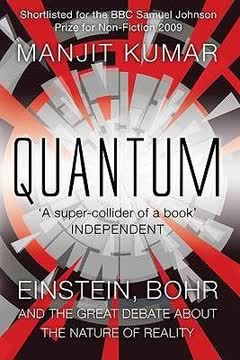

Download PDF
Download EPUB
.epub digital book format is ideal for reading ebooks on phones, tablets, and e-readers.
